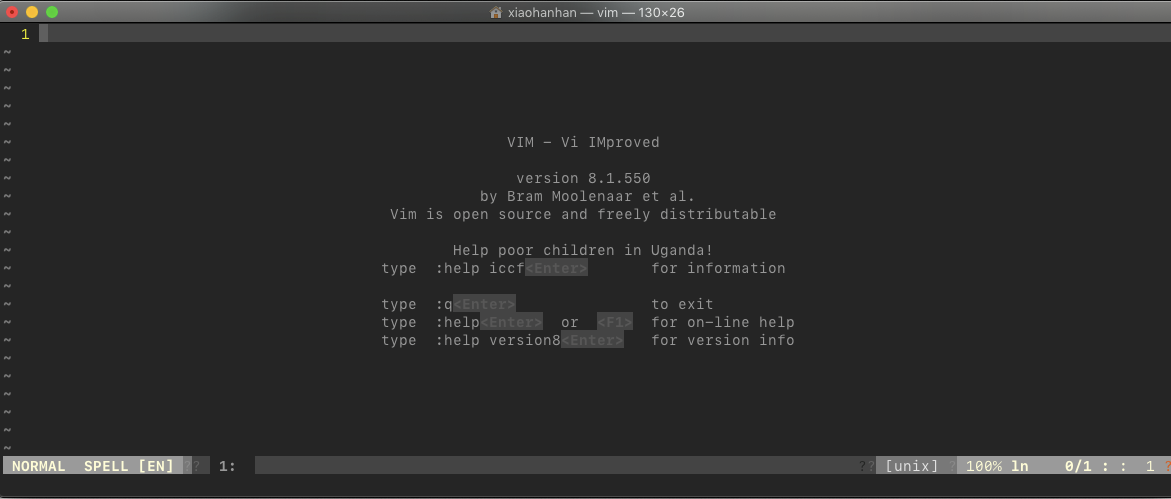
This tutorial includes some basic vim commands and I hope that it will be helpful.
Moving the cursor
h: leftj: downk: upl: right
It takes time to get used to it.
Navigation
w: move the cursor one word forward (to the first letter)b: one word backward (also to the first letter)e: one word forward (to the last letter)fx: forward to the letterx(: to the start of the sentence): start of the sentence0: start of line$: end of line{: start of paragraph}: end of paragraphG: end of filectrl+G: to see the cursor location and file status
gg: start of filexG: to the numberxline of file- typing a number before a motion repeats it that many times!
Delete
x: delete the character at the cursordw: delete all the characters between the cursor and the first letter of the next word- e.g. Please de
lete the word. (Assume the cursor is atl) - After you press dw, the sentence becomes
Please dethe word delete
- e.g. Please de
de: delete all the characters between the cursor and the next space- e.g. Please de
lete the word. (Assume the cursor is atl) - After you press de, the sentence becomes
Please de the word delete
- e.g. Please de
d$: delete to end of linedd: delete whole linep: After you delete something, press p to paste things you delete wherever you like.
Insert
a: insert after the cursorA: insert after the end of linei: insert before the cursorI: insert before the start of lineo: insert in the next lineO: insert in the previous line
Search
/yourSearchString + <Enter>: search foryourSearchStringn: to search for the same string again (press<Enter>to exit)N: to search for the same string again, but in opposite directionctrl+o: to go back to where you came fromctrl+i: to go forward- set option
:set ic: ignore case:set noic: disable ignore case:set hls: highlight the matches:set nohls: disable highlight matches:set is: increase search:set nois: disable increase search
%: move the cursor to the other matching parenthesis
Replace
rx: replace the character at cursor withxce: almost the same asde, but this time will place you in Insert Modes/old/new: replace the first occurrence of ‘old’ with ‘new’s/old/new/g: replace all occurrence of ‘old’ with ‘new’ in one line#,#/old/new/g: #,# are the line numbers of the range of lines where the replace should be done%s/old/new/g: replace all occurrence of ‘old’ with ‘new’ in the whole file%s/old/new/g: replace all occurrence of ‘old’ with ‘new’ in the whole file, with a prompt whether to replace or not
Undo & Redo
u: undo the last commandU: undo the command excuting on the while linectrl+R: redo the command
Copy & Paste
y: to copyp: to paste- e.g. Start Visual Mode with
vand move the cursor to chose whatever you want, typeyto copy the highlighted text and typepto paste the text.
- e.g. Start Visual Mode with
Others
.: repeat the last command<start position><command><end position>: many commands follow this pattern- e.g.
0y$means copy the whole line0move the cursor to the start of lineycopy$move the cursor to the end of line
- e.g.
ctrl+n: auto complete
